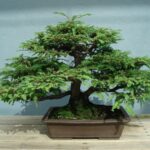Embark on the captivating journey of bonsai cultivation with our comprehensive guide, ‘From Beginner to Bonsai Master: Your Ultimate Guide to Growing Miniature Trees.’ This guide is a treasure trove of insights for enthusiasts eager to delve into the world of bonsai, from laying the initial groundwork to mastering advanced techniques. Whether you’re a novice or on your way to becoming a bonsai connoisseur, our guide will support you in nurturing these miniature marvels into thriving works of living art.
Key Takeaways
- Selecting the right bonsai tree and understanding its unique style are the first steps towards bonsai mastery.
- Learning the proper watering, positioning, and soil composition is crucial for the health and growth of your bonsai.
- Advanced pruning, wiring, and repotting techniques are essential for shaping and maintaining the aesthetic of your bonsai tree.
- Seasonal care, nutrient management, and pest prevention are key to ensuring the year-round beauty and vitality of your bonsai.
- Embracing bonsai cultivation can enrich your life, and becoming part of a bonsai community offers support and enhances your experience.
Laying the Foundations: Starting Your Bonsai Journey

Choosing Your First Bonsai Tree
Embarking on the bonsai journey begins with selecting the right tree, a decision that sets the foundation for your future as a bonsai cultivator. Choosing a species that aligns with your climate and care abilities is crucial. For beginners, some species are more forgiving and adaptable, making them ideal candidates for your first bonsai experience.
- Ficus: Hardy and tolerates lower light, less demanding with watering.
- Jade: Easy to maintain, suitable for indoor environments.
Consider whether you’ll be keeping your bonsai indoors or outdoors, as this will narrow down your choices significantly. Indoor varieties, such as Ficus and Jade, are excellent for those who prefer or need to keep their bonsai inside. It’s important to remember that each tree has its own unique needs and characteristics; understanding these will greatly influence your success.
When starting out, it’s better to opt for a tree that’s known for its resilience and ease of care. This ensures a more forgiving learning curve and a greater chance of thriving under a beginner’s care.
Understanding Bonsai Styles and Forms
The world of bonsai is rich with various styles and forms, each with its own unique characteristics and aesthetic appeal. Bonsai tree style classifications are a way of categorizing bonsai trees based on their shape and form, which often reflect the natural conditions that influence their growth in the wild.
- Formal Upright (Chokkan): This style represents trees that grow straight with a clear taper and balanced branches.
- Informal Upright (Moyogi): These trees have a more relaxed appearance with a trunk that may curve slightly.
- Slanting (Shakan): Slanting bonsai mimic trees that grow at an angle due to wind or other natural elements.
- Cascade (Kengai): Inspired by trees that grow over cliffs or waterfalls, the cascade style has branches that fall below the base of the pot.
- Semi-Cascade (Han-kengai): Similar to the cascade, but the branches do not fall as far.
Each style offers a unique challenge and requires a specific approach to pruning, wiring, and care to achieve the desired effect.
Understanding these styles is crucial for any aspiring bonsai artist. It allows you to envision the potential of your tree and guides you in shaping it to emulate the majesty of nature on a miniature scale.
Essential Tools for Bonsai Cultivation
Embarking on the bonsai journey requires not just patience and skill, but also the right set of tools. Selecting the appropriate tools is crucial for the delicate task of bonsai cultivation. These tools are designed to ensure precision and care in every cut and adjustment you make to your miniature tree.
The basic toolkit for any bonsai enthusiast should include a variety of specialized instruments. Here’s a list to get you started:
- Bonsai Scissors: For trimming leaves and small branches.
- Bonsai Wire Cutters: Essential for shaping and holding branches in place.
- Bonsai Knob Cutters: To remove unwanted knobs and to create a smooth trunk.
- Bonsai Rakes: For detangling roots and spreading soil.
- Bonsai Saws: For cutting thicker branches.
- Bonsai Jin Pliers: For creating jin and shari, deadwood features on bonsai.
While many tools are available, begin with the essentials and expand your collection as your skills grow. Remember, the quality of your tools can greatly affect the health and appearance of your bonsai.
It’s also worth noting that maintaining your tools is as important as having them. A standing knife sharpener, for example, can be used to keep your grafting knives or scissors in top condition, ensuring clean cuts and a healthy tree.
The Art of Bonsai Cultivation

Watering and Positioning Your Bonsai
Proper watering is the cornerstone of bonsai care. Water your bonsai only when the soil looks light brown and feels slightly damp; this ensures the soil goes from wet to damp between watering sessions. Overwatering can lead to root rot, while under-watering can cause wilting and yellowing of leaves.
Positioning your bonsai is equally crucial. It requires indirect light for a few hours daily to photosynthesize effectively. Avoid direct sunlight that can scorch the leaves, and find a balance that mimics the tree’s natural environment.
Remember, the hotter the position, the more water your bonsai will use. Monitor both the moisture level of the soil and the ambient temperature to adjust your watering schedule accordingly. Here’s a simple checklist for optimal care:
- Check the soil moisture morning and evening.
- Water thoroughly until it drains from the bottom.
- Never let the soil completely dry out.
- Avoid constant wetness to prevent root issues.
- Position your bonsai to receive a few hours of indirect sunlight daily.
- Rotate the tree occasionally to ensure even growth.
Principles of Pruning for Optimal Growth
Pruning your bonsai is a delicate art that requires understanding and patience. Each cut should be thoughtful and purposeful, aiming to shape the tree while encouraging healthy growth. It’s not just about removing unwanted branches; it’s about guiding the tree to realize its aesthetic potential.
- Identify and remove dead or damaged branches to prevent disease.
- Trim back overgrowth to maintain the tree’s miniature size.
- Cut strategically to enhance the tree’s natural shape and style.
Pruning isn’t simply a task—it’s an ongoing dialogue with your bonsai. As you prune, you’re not just shaping the tree, but also ensuring it has the resources it needs to thrive.
Remember, the goal of pruning is not just to maintain size but to create a harmonious and balanced form. Regular pruning sessions will become an integral part of your bonsai’s life cycle, contributing to its longevity and beauty.
Bonsai Soil Selection and Composition
Selecting the appropriate soil for your bonsai is not just a matter of aesthetics; it’s a crucial factor in ensuring the health and growth of your miniature tree. The right soil mix provides the necessary support, nutrients, and drainage to mimic the natural environment of the bonsai.
- Drainage: Ensures excess water flows through, preventing root rot.
- Aeration: Allows roots to breathe, promoting healthy growth.
- Water retention: Keeps moisture available to the tree without waterlogging.
- Nutrient content: Supplies the tree with essential minerals.
The balance of these elements is key to a thriving bonsai. Too much or too little of any component can lead to poor health and stunted growth.
When considering soil composition, it’s important to understand that different species of bonsai may require different soil mixes. For instance, a juniper may thrive in a mix with more akadama, while a tropical species might prefer a blend with more organic material. Tailoring the soil to your specific bonsai’s needs will pay dividends in the form of a more vigorous and aesthetically pleasing tree.
Advanced Techniques for Bonsai Mastery

Mastering Bonsai Tree Pruning
Pruning is not just a horticultural practice but a form of living sculpture. Mastering bonsai tree pruning is crucial for shaping the tree’s silhouette and ensuring its miniature form. It involves the strategic removal of branches, leaves, and roots to maintain the tree’s aesthetic and health.
- Structural Pruning: Performed during the dormant season to shape the tree’s overall structure.
- Maintenance Pruning: Regular trimming to refine the tree’s appearance and encourage new growth.
- Root Pruning: Done at the time of repotting to balance the root mass with the canopy.
Pruning your bonsai is an ongoing process that requires observation and adaptation. Each cut is a decision that influences the tree’s future growth and character.
Remember, the goal of pruning is not just to maintain size but to create a harmonious and balanced form that reflects the essence of the species. Patience and precision are your allies in this journey towards bonsai mastery.
The Intricacies of Bonsai Wiring and Styling
Wiring is a pivotal technique in bonsai artistry, allowing for the precise shaping of a tree’s trunk and branches. The right wiring can transform a bonsai, guiding its growth and enhancing its natural elegance. When beginning the wiring process, it’s crucial to study your bonsai and identify branches that require re-styling.
- Select the appropriate wire size and length for each branch, with thicker branches necessitating thicker wire.
- Anchor the wire carefully around the trunk, ensuring the ends can be wrapped along the branches.
- Follow the branch with the wire, avoiding over-tightening, to gently guide its growth.
Remember, the goal of wiring is not to constrain, but to guide and shape the bonsai’s development. Patience and a gentle touch are key.
As you advance in your bonsai journey, you’ll encounter more complex techniques such as potting, root management, and severe bending. These methods, along with advanced wiring, are essential for achieving the desired aesthetic and maintaining the health of your bonsai.
Repotting Essentials for Healthier Bonsai Trees
Repotting is a pivotal step in maintaining the health and aesthetics of your bonsai tree. Proper repotting encourages vigorous growth and ensures the tree’s roots have adequate space and nutrients. Begin by preparing the new pot, covering the drainage holes with mesh, and adding a layer of fresh bonsai soil.
When removing the bonsai from its current pot, be gentle to minimize root damage. Trim the roots carefully, removing any that are dead or overly long, which promotes a healthy root system. The repotting process is also an ideal time to examine the root ball; if it’s solid and firm, it’s a clear sign your bonsai needs more room to grow.
Balance is key in bonsai repotting. The new pot should complement the tree both in size and style, creating a harmonious visual effect.
After repotting, water your bonsai thoroughly to settle the soil and eliminate air pockets. This also helps the tree recover from the stress of repotting. With these steps, your bonsai is set to continue its journey towards mastery.
Nurturing Your Bonsai: Care and Maintenance

Fostering Growth with Essential Nutrients and Fertilization
To ensure your bonsai thrives, selecting the right fertilizer is crucial. Fertilizers provide essential nutrients that are vital for the health and vigor of your miniature tree. Slow-release and liquid fertilizers are popular choices, each suited to different needs of the bonsai.
When considering fertilization, it’s important to understand the macronutrients that bonsai trees require:
- Nitrogen (N): Promotes vigorous growth and the rich green color of leaves.
- Phosphorus (P): Essential for root development, flowering, and fruiting.
- Potassium (K): Aids in overall plant health and disease resistance.
Consistent and balanced fertilization is key to maintaining a healthy bonsai. It’s not just about the frequency of application but also the quality of the fertilizer used.
Remember to keep records of your fertilization schedule and the responses of your bonsai. This practice will help you tailor your approach to meet the specific needs of your tree. Opt for a reputable supplier and consider a fertilizer like The Art of Fertilizing – Bonsai Tree (Pty) Ltd., which is completely plant organic and suited to all species of bonsai.
Seasonal Bonsai Care for Year-Round Beauty
Caring for your bonsai involves a keen understanding of the seasonal changes and how they affect your miniature tree. Each season brings its own set of care requirements to ensure your bonsai remains healthy and continues to thrive.
In spring, the focus is on supporting the vigorous growth that comes with warmer weather. This is the time for repotting, if necessary, and beginning fertilization routines. As summer approaches, watering becomes crucial; bonsai may need more frequent watering to prevent drying out. Monitoring for pests and diseases is also vital during this active growth phase.
Fall is a period of preparation for dormancy. Reduce fertilization and begin to protect your bonsai from the cooler temperatures. Winter care is mostly about protection, ensuring that your bonsai is not exposed to extreme cold or winds that can damage the delicate branches or roots.
By tailoring your care techniques to the season, you can enjoy the evolving beauty of your bonsai year-round.
Pest Management and Disease Prevention
Maintaining the health of your bonsai involves vigilant pest management and disease prevention. Integrated Pest Management (IPM) is a sustainable approach that minimizes the risk of infestations and illnesses. It combines various strategies to keep your bonsai thriving:
- Cultural practices, such as proper pruning and irrigation.
- Mechanical methods, including the use of netting and traps.
- Biological controls, like introducing beneficial insects.
- Chemical treatments, which should be a last resort and applied responsibly.
Prevention is at the heart of IPM, aiming to avert issues before they harm your bonsai. Selecting pest-resistant plant varieties and upholding garden hygiene are fundamental preventive measures. Remember, some insects are allies in this endeavor; spiders and larger insects often consume the smaller pests that could damage your bonsai.
By consistently monitoring for signs of pests and diseases, you can take timely action to protect your bonsai. Early detection is key to effective control and maintaining the delicate balance required for your miniature tree’s health.
Embracing the Bonsai Lifestyle

How Bonsai Can Change Your Life
The practice of bonsai cultivation offers more than the joy of gardening; it is a pathway to personal growth and inner peace. As you learn to care for these miniature trees, you embark on a journey that nurtures not just the bonsai but also your own wellbeing.
- Bonsai can boost mental wellbeing by promoting relaxation and a sense of accomplishment.
- Caring for bonsai trees encourages mindfulness and patience, which are essential qualities in today’s fast-paced world.
- The art of bonsai teaches the importance of perseverance and respect for nature, reminding us to appreciate the beauty in the little things.
Bonsai cultivation is a reflection of love and dedication. It is a silent teacher, imparting lessons of patience and creativity as we watch our miniature trees flourish over time.
By integrating bonsai into your life, you not only gain a hobby but also a companion in your quest for tranquility. It is a creative outlet that allows you to express yourself and connect with nature on a profound level.
Displaying Your Bonsai: Aesthetics and Placement
The display of your bonsai is as crucial as its cultivation. The tree should be positioned at a height that allows the viewer to see it clearly, while also creating an attractive composition. This not only enhances the tree’s beauty but also showcases the care and skill that went into its development.
When considering placement, light and location are paramount. Your bonsai needs to be in a spot where it receives the appropriate amount of light, which is essential for its health and aesthetic appeal. However, avoid areas with harsh direct sunlight that can damage the delicate leaves.
The art of bonsai display is about creating harmony between the tree and its environment, ensuring that each complements the other.
Here are some tips for optimal bonsai placement:
- Choose a location that complements the style of your bonsai.
- Ensure the spot is away from strong drafts or heat sources.
- Consider the background; it should not distract from the bonsai.
- Rotate your bonsai periodically to ensure even growth and exposure.
Joining the Bonsai Community: Clubs and Resources
Becoming a part of the bonsai community enriches your journey and provides invaluable support. Local clubs and online forums are treasure troves of knowledge, where you can share experiences, get advice, and make lasting friendships.
- Local Bonsai Clubs: Offer workshops, exhibitions, and a chance to learn from seasoned practitioners.
- Online Communities: Provide 24/7 access to forums, Q&A sessions, and a global network of enthusiasts.
- Newsletters and Mailing Lists: Keep you updated on the latest in bonsai care, events, and special offers.
Embrace the collective wisdom of the bonsai community to enhance your skills and enjoy the full experience of this living art.
Remember, every master was once a beginner, and the community is always eager to help newcomers grow. Whether it’s through a local club or an online platform, engaging with fellow enthusiasts will accelerate your learning and deepen your appreciation for bonsai.
Conclusion
Embarking on the journey from a beginner to a bonsai master is a path filled with patience, learning, and an appreciation for the delicate art of cultivating miniature trees. Throughout this guide, we have explored the foundational steps, from selecting the right species and understanding the essentials of care, to mastering the intricate techniques of pruning, wiring, and repotting. As you apply these principles and nurture your bonsai, you will not only witness the transformation of your tree but also experience the profound way in which the art of bonsai can enrich your life. Remember, every master was once a beginner, and with dedication and the knowledge you’ve gained, your bonsai will flourish, reflecting the beauty and resilience of nature in miniature form.
Frequently Asked Questions
How do I choose my first bonsai tree?
Select a species recommended for beginners, such as those with the ability to re-grow quickly, and consider a bonsai kit that includes all the necessary tools.
What are the essential tools for bonsai cultivation?
The basic tools include pruning shears, wire cutters, and bonsai wires for shaping. A complete kit may also include pots, soil mix, and fertilizers.
How often should I water my bonsai tree?
Watering frequency depends on the species, pot size, and climate, but generally, bonsai should be watered when the soil feels slightly dry to the touch.
When is the best time to repot my bonsai tree?
Repotting is crucial for bonsai health and should be done every 2-3 years, preferably in spring when the tree is in its active growth phase.
What is the importance of bonsai soil selection?
Bonsai soil must provide proper drainage and aeration while retaining enough moisture to support the tree’s growth. A well-balanced soil mix is vital.
Can I grow an Australian native species as a bonsai?
Absolutely, Australian native species offer a unique perspective on bonsai cultivation and can be a fresh addition to your collection.








Thank you for the auspicious writeup It in fact was a amusement account it Look advanced to far added agreeable from you However how can we communicate
Your blog is a beacon of light in the often murky waters of online content. Your thoughtful analysis and insightful commentary never fail to leave a lasting impression. Keep up the amazing work!
Your writing is like a breath of fresh air in the often stale world of online content. Your unique perspective and engaging style set you apart from the crowd. Thank you for sharing your talents with us.